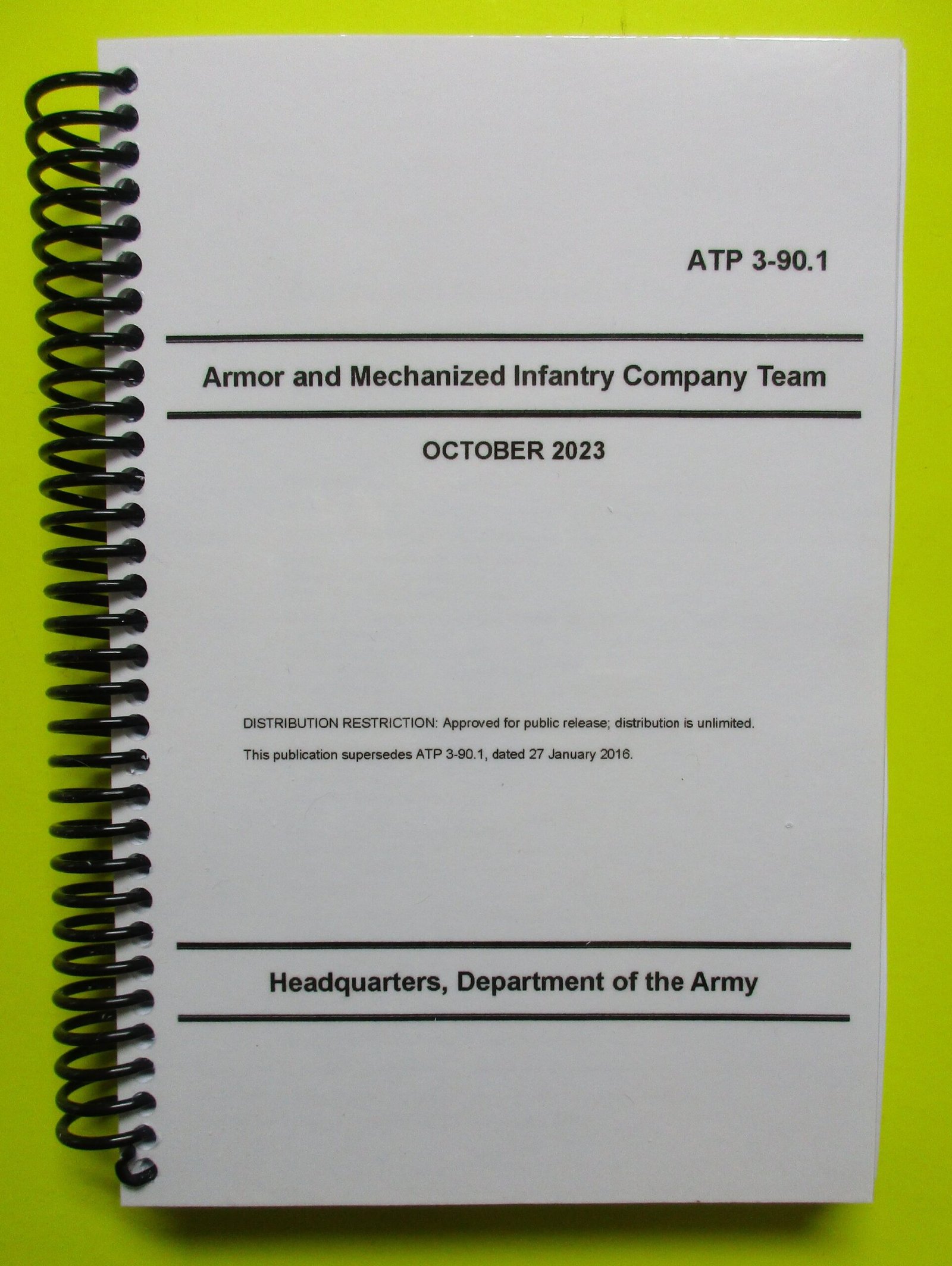Dated Oct 2023
ATP 3-90.1 provides techniques for the employment of Armor and mechanized Infantry company teams within combined arms battalions (CABs) in the Armored brigade combat team (ABCT). It provides the framework and technical employment principles for Armor and mechanized Infantry company teams within CAB in the ABCT.
ATP 3-90.1 applies to the Active Army, Army National Guard/Army National Guard of the United States and United States Army Reserve unless otherwise stated.
Introduction
ATP 3-90.1 has been updated and provided as an Army techniques publication per 2015 Doctrine Strategy. In addition to doctrine changes, a significant effort has been made to eliminate redundancies with parent doctrinal manuals. The result is a reduction of chapters from 11 to 8.
Chapter 1 discusses the operational overview for the company team and describes the role of the Armor and mechanized Infantry company team. It also includes the duties and responsibilities for key personnel.
Chapter 2 describes the basics of the offense, common offensive planning considerations, actions on contact, movement to contact, and attack.
Chapters 3 describes the basics of the defense, common defensive planning considerations, defensive techniques, engagement area development, and transitions.
Chapter 4 discusses the fundamentals of stability, stability operations at company level, and transitioning to the offense or defense.
Chapter 5 discusses principles of direct fire control, the fire control process, direct fire planning, and direct fire control.
Chapter 6 describes the provision of the logistics, personnel services, and the Army health system support necessary to maintain operations until mission accomplishment.
Chapter 7 establishes techniques and procedures that the company team can apply to these specialized missions (such as, linkup, passage of lines, relief in place, battle handover, assembly area operations).
Chapter 8 focuses on those elements with which the company team is most likely to work: fires, aviation, protection, and intelligence.
Appendix A describes the function of the company team command post (CP), locations for the CP, and resourcing the CP.
Appendix B focuses on the planning and preparation, troop leading procedures, rehearsals, and precombat checks and precombat inspections.
Appendix C provides an overview of combined arms breaching operation types and tenets at the company team level.
Appendix D discusses chemical, biological, radiological, and nuclear (CBRN) defensive measures to include the hazards of each threat, CBRN passive defense, and protection.
This book is a “BIG” (the size of a regular piece of paper) size – Coil binding is used to allow for easy page flipping with no binding.
This website also has this book in “mini” size (half the size of a regular sheet of paper). A popular, reduced cost size to carry anywhere (briefcase, large pocket, purse) but the print is large enough for easy reading.
The Color covers are laminated for weather protection with black and white inside printing.




